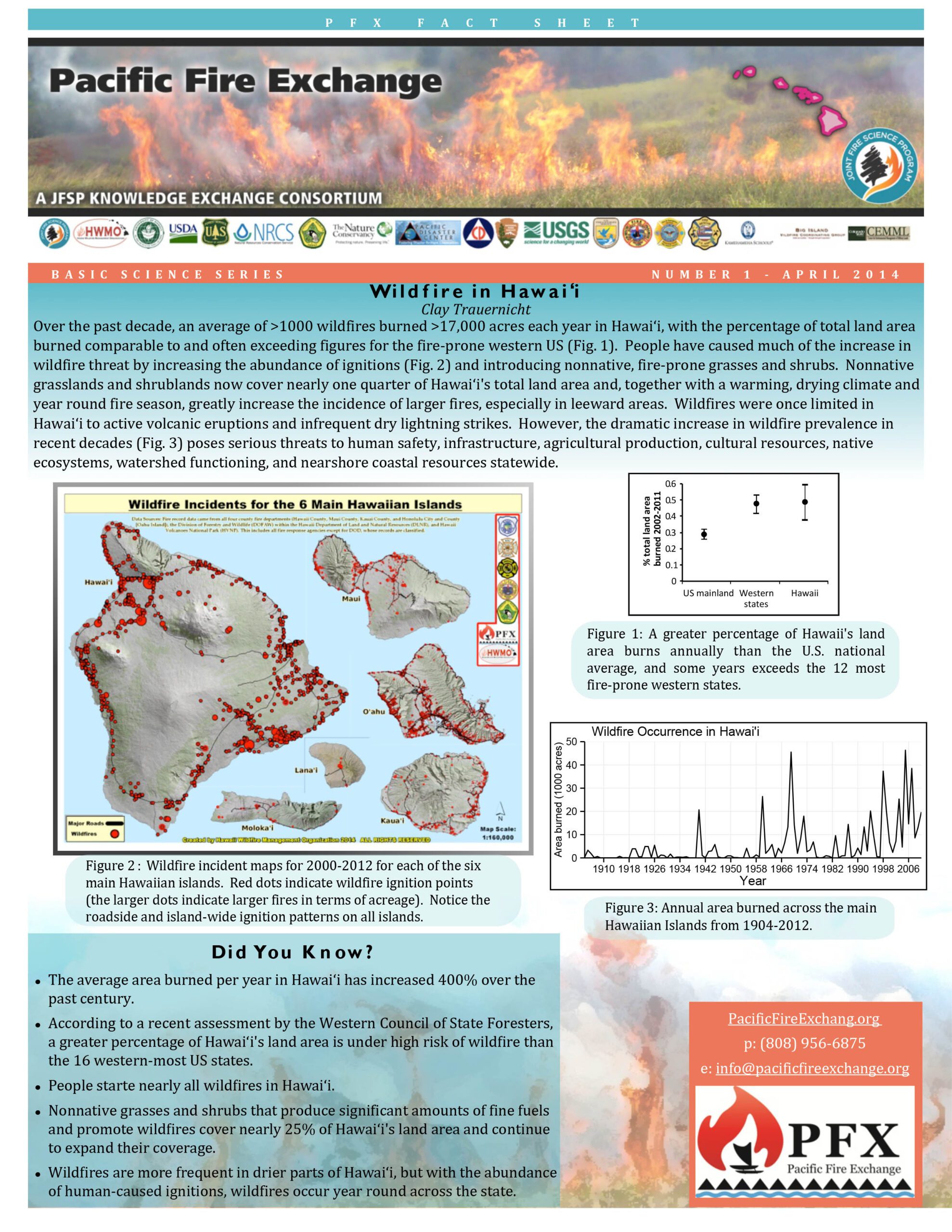Today’s Fire Challenges in Hawaiʻi
Rising Population, Rising Fires
As the human population in Hawaiʻi has risen, ignitions have followed. The vast majority of ignitions in Hawaiʻi are caused by human error or arson, particularly in developments, along powerline right-of-ways, and along roadsides. Additionally, increased demand for infrastructure and resources often results in the construction of roads and power lines traversing fire-prone areas, further amplifying ignition risk.
Fires Driven by Vegetation Fuels and Exacerbated by Climate Change
Hawaiʻi is suffering the consequences of climate change not just through rising sea levels. Rising temperatures and prolonged droughts are highly conducive to larger and more destructive wildfires. Climate change also brings an increased frequency of severe storms which can cause both ignitions through infrastructure damage, and drive fire spread once ignited. While storms can also bring heavy rainfall, particularly wet seasons can paradoxically worsen fire risks in subsequent dry seasons. This occurs due to the accumulation of vegetation, known as fuel loading, during the wet season. When the next dry period ensues, this excess fuel becomes highly flammable, intensifying the potential for wildfires. >> READ MORE
To summarize, the primary drivers of fire occurrence are: frequent, mostly human-caused ignitions; expansion of nonnative, fire-prone grasslands and shrublands over c. 25% of state land area; and strong rain shadow effects and episodic drought create which create year-round fire weather. >> READ MORE
Wildfire in Hawai‘i Factsheet

